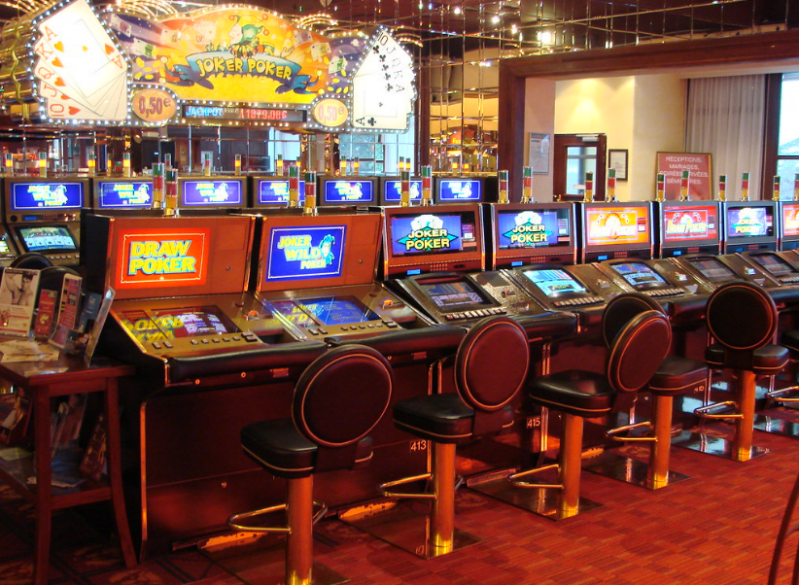
In a lively and thrilling world of gaming establishments, wherein fortune and tactics intertwine, hues and design play a key role in drawing in players. As soon as visitors step into a casino or access a gaming website, they are immersed in a sightly feast that captures their attention and lures them to discover further. Vivid colors, captivating graphics, and innovative layouts are carefully crafted to create an environment of excitement and expectation, ultimately enhancing the gaming experience.
While gamblers move through the dynamic landscape of casino games, they come across a variety of designs that not only serve aesthetic purposes but also affect feelings and choices. Colors like scarlet and gold symbolize wealth and fortune, while soothing navy and greens can create a more tranquil environment. Grasping how these elements function together enables casinos to create an welcoming and energizing atmosphere that encourages players to engage with the games, invest additional time at the tables, and increase their general enjoyment.
The Study of Hue in Gambling Games
Tint plays a crucial role in the design of gambling games, influencing players’ emotional states and behaviors. Vivid and bold shades, such as crimson and gold, are often used to ignite thrill and draw attention. These shades create a sense immediacy and energy, encouraging gamblers to engage more readily with the experience. By strategically selecting tints, developers aim to evoke feelings of joy and anticipation, which can enhance the overall player experience.
Different colors also have psychological connotations that can impact how players perceive their chances of winning. For case, green is frequently associated with fortune and prosperity, making it a popular choice in activities like the roulette wheel and poker setups. This link can cause players to feel more positive and self-assured in their gameplay, ultimately inspiring them to bet more. Understanding these links allows game designers to create environments that enhance player happiness and engagement. bakar69
In addition, the layout of casino game interfaces often employs blended colors and opposing colors to guide players’ actions. For case, winning outcomes may be accentuated with bright, differing shades, creating a visual incentive. This approach reinforces successful results and encourages repeated participation. By leveraging the science of color, gambling establishments can develop games that not only attract players but also hold them involved and committed in their play experience.
Design Elements that Engage Gamers
The aesthetic appeal of gambling games is primarily influenced by the implementation of vibrant colors. Bright and contrasting colors are deliberately chosen to create an inviting atmosphere that grabs interest. For example, reds and golds often signify luck and wealth, which is why they are common in the palettes of slot machines and table surfaces. These colors not only draw players in, but they also evoke emotions associated with excitement and anticipation, enhancing the overall gaming experience.
In addition to color, the aesthetic and layout of gambling games play a significant role in captivating players. Games are designed to be intuitive, ensuring that players can easily understand the rules and gameplay. User-friendly interfaces, along with engaging graphics and motion, help maintain player interest and encourage longer play sessions. The tactile elements, such as the texture of the buttons and the audio of the games, also contribute to a comprehensive sensory experience that keeps players engaged.
Finally, conceptual elements in gaming design can greatly influence player choice. Many casino games are inspired by popular culture, myths, or adventure themes, incorporating symbols and characters that resonate with players. These themes create a sense of immersion and relatability, making each game feel distinct. When players feel a bond to the concept, they are more likely to opt for that game over others, leading to higher participation and enthusiasm within the casino environment.
Case Studies: Notable Casino Table Game Designs
One prime example of effective casino game design is the well-known slot machine series based around hit movies. Games such as those based on the Wizard of Oz and Game of thrones utilize vibrant colors and top-notch graphics to immerse players in recognizable narratives. The use of lively visuals and entertaining sound effects grabs the interest of players, creating an psychological connection to the theme. This strategy not just promotes longer play but also boosts the overall gaming experience, resulting in increased player retention.
Another notable case is the use of color in table games like blackjack and roulette. Casinos often design these games with dark reds and greens, colors traditionally connected with luck and wealth. For instance, the emerald felt on a blackjack table provides a calming effect, while the crimson accents in the wheel invite anticipation. This intentional use of color helps to foster an inviting atmosphere that motivates players to join in, fulfilling their psychological impulses and boosting their enjoyment.
Finally, online casino games that incorporate community features and vivid, colorful designs have seen remarkable success in engaging players. Games like Zynga Poker and Slotomania leverage vivid colors and playful animations to establish an inviting online environment. The integration of leaderboards, social sharing options, and in-app rewards encourages competition and community, pulling players in for longer sessions. Such designs merely make the games visually enticing but also emphasize community engagement, a vital factor in player retention and engagement within online casino environments.
